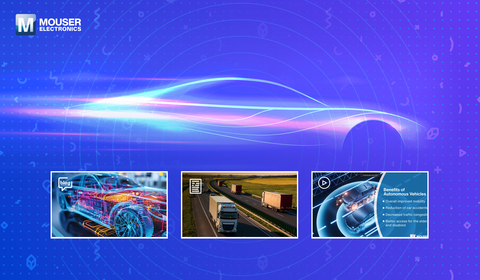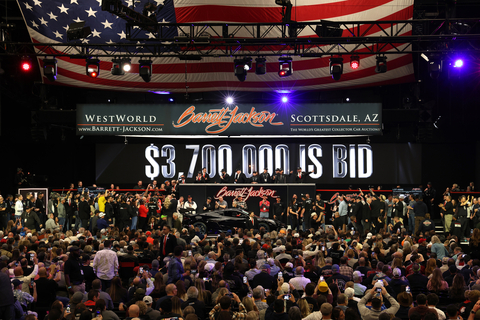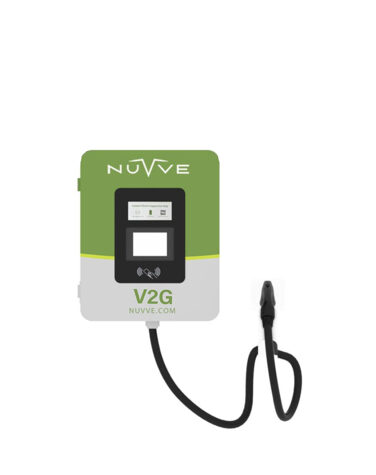
The land down under has big plans for niche market.
 |
| Toyota jumps on the ute wagon debuting X-Runner at the Melbourne, Australia, auto show. |
The Australian motor industry is pragmatic, however. The four assemblers, Holden, Ford, Toyota and Mitsubishi, have been building exports and capacity utilization is among the best in the world. But as a car assembly base, the country is still ranked only 24th in the world. It does see a prosperous future, though. It is one that draws on Australia’s history as a country that has had to make the best of what is available. It is good at engineering and it is good at small-volume assembly. By being good, it can make money out of it.
Focus on design, research and technology is a mantra being chanted throughout the industry in Australia, from very supportive local government to the auto makers and their suppliers.
Holden’s Monaro is a case in point. It is a car developed with little support — or probably knowledge — from GM headquarters. Similarly, the Ford Territory is designed, engineered and built in Melbourne.
Toyota is building a new research and development center next to its plant in Port Melbourne. It’s President and CEO, Ken Asano, has a plan to build Australia-specific cars off the next Camry/Avalon platform due in 2005.
A hint of this was the X-Runner ‘ute’ concept unveiled at the Melbourne Show. Utes are unique to Australia. Combination of a sporty two door coupe and two-seat pickup, they are at home in the outback or on urban roads. Mitsubishi also is extending its design centre near Adelaide. It already sends the Magna into North America, badged as the Diamante, and is now planning to export a further model around 2005 or 2006.
Among the suppliers, Air International has just established a global technical centre in Melbourne where Robert Bosch has invested tens of million of Australian dollars in a diode factory.
“Design research and development are critical to the future of the Australian auto industry,” says Tim Holding, minister for manufacturing and exports for the State Government of Victoria. “We are good at design and we are very good at low volumes so this is where we can fill niches in terms of the industry worldwide.”
A good example he cites is at Siemens VDO which will produce 100,000 instrument panels a year for BMW motorcycles. “It is these small volumes which other countries around the world are unlikely or unwilling to take on that sets us apart,” says Holding. The Australian market has been through the wringer and is now coming out the other side leaner and meaner. Despite moderate economic forecasts, aggressive marketing, pressure on prices, showroom incentive deals and new models pushed the domestic market to around 825,000 vehicles in 2002.
Laurie Sparke, chief engineer, advanced engineering at Holden agreed that the industry has to build on its strengths. “What we do have is an abundance of engineering brain power,” he says.
“Increasing access to world markets presents an opportunity. It allows Australian manufacturers to create specialized businesses providing supplementary or niche products that are needed in the larger markets. The opportunity is to be innovative and creative, and to be first into niche market opportunities.” Sparke adds: “Australian engineers seem to have an enhanced mechanical affinity compared to engineers from other regions and cultures. Australians have a long history of innovation, solving problems in isolation from the rest of the world and using the resources at hand.”
As examples he quotes Hargrave’s flying machines, the stump-jump plough, the Hill’s Hoist and the Black Box flight recorder.
“This innovative culture means that Australian engineers have the potential to develop develop innovative products and manufacturing solutions to compete in the global market place. “Australian industries cannot attempt to be at the forefront of all of the emerging technologies, but must carefully select those technologies that will enable future success.”
Holden considers that a commitment to develop flexible manufacturing processes, occupant safety and automotive information technologies, computer visualization techniques and environment strategies are important areas for ensuring continued success. Steve D’Arcy, global automotive leader at PriceWaterhouseCoopers, says that with local car manufactures Holden, Ford, Toyota and Mitsubishi increasing exports, particularly to the Middle East and North America, Australia will soon be one of the most highly utilized production centers in the world.
The biggest threat to Australia, however, is likely to come from developing production centers such as China and Thailand.
“China has the potential to be the largest car market in the world and who is to say that there will not be an indigenous Chinese car manufacturer rising up to enter the top 10 vehicle makers in the next few years,” says D’Arcy. “It will then not be too long before China starts exporting.”
This was a fear echoed by Max Gillard, associate director, Toyota Australia. He says: “Right now we have the most flexible and cheapest Camry manufacturing operation in the world but we can’t always rely on having this competitive edge with countries like Thailand and Malaysia raising their game.
“The need for change has never been greater. We must change the way we operate to stay competitive because we just do not have the economies of scale that other countries enjoy in terms of the domestic market and exports. As we become more integrated into global strategies we have to move from an isolated industry to one that is globally competitive reducing our development and tooling costs and time.”
“All cars in Australia are niche by North American or European standards,” says Ford Australia Design Director Simon Butterworth. “But we have always been good at small volumes. Suppliers have had to survive on volumes that that Europeans or North American businesses would not even look at.”
Showing Their Utes
The unique Aussie pickup is still a hit down under.
The Melbourne Motor Show might bill itself as ‘international,’ but this year it was dominated by variations on a vehicle unique to the Australian market — the ‘ute’.
A ute is basically a two-seat, two door sports pickup or utility vehicle. It’s a style of vehicle that’s been around for a while but judging by those on show in Melbourne, there’s no sign of slowdown in its popularity.
One of the most interesting was the Toyota X-Runner concept, not destined for production but it has been styled, engineered and built by Toyota Australia.
And if Ken Asano, president of the company in Oz, has his way, there could well be a ute based on the next generation Camry due in 2005.
“I set a challenge to our engineers in Australia last year to come up with a vehicle made here for this market. The R-Runner is the result and I would like to think we could do something with the next Camry. If you look back in history we had a pick-up based on the Corona many years ago.”
X-Runner is based on a stretched version of the Toyota Modular Platform that underpins the current Camry and Avalon, both built in Melbourne. It features all-wheel-drive and is powered by a supercharged 186 hp version of Toyota’s 3L quad cam, 24-valve V-6.
Just as important was the unveiling of Holden’s new One Tonner ute which was something of an institution in Australia until it was canned in 1984. The new model features a durable stainless steel tray at the back, live axle and leaf springs rather than independent rear suspension. Two versions will be available, a 157 hp 3.8L V-6 and a top-of-the-range 225 hp 5.7L V-8 there’s still no replacement for displacement as they say down under.
Holden also showed a version of the One Tonner called the Maloo Cab Chassis, again powered by the V-8 with revised interior and uprated brakes, wheels and tires. This vehicle could be built in small numbers later this year.
Not to be left out, Ford showed off its Hi-Ride version of the BA Falcon pickup which is 80 mm higher than the standard version with wider track, larger wheels and a locking rear differential.
This model is due to go into production later this year with 4- or 5.4L engines.
Foreign Territory
New Ford model to take the place of imports .
 Another example of the Australian auto industry’s will to succeed in market niches is the Ford Territory, an all-new crossover vehicle based on the Falcon platform and scheduled for launch next year, and like Holden’s Monaro it could reach markets further afield.
Another example of the Australian auto industry’s will to succeed in market niches is the Ford Territory, an all-new crossover vehicle based on the Falcon platform and scheduled for launch next year, and like Holden’s Monaro it could reach markets further afield.The Territory is slated for production next year on the same assembly line as the Falcon and was conceived and designed from scratch in the company’s Broadmeadows design studio in Australia. It is a full, off-road vehicle but with the styling of a more traditional station wagon.
While it is aimed at the domestic market there could be a future for the vehicle in other markets round the world according to Ford insiders.
Ford Australia President Geoff Polites says: “Territory allows us to make better use of our plant capacity and will also attract new people to the Blue Oval brand — specifically younger buyers and women. “Importantly for Australia, we estimate that 60 percent of Territory sales will substitute for current imports. So even without an export program, this vehicle will produce trade and balance of payments benefits for Australia.”
The vehicle shares a number of components with the Falcon, but has a completely different underbody structure, unique front suspension and an all-wheel-drive system that incorporates global technology. Territory will also share some Falcon engines and transmissions.
Ford Asia Pacific design director Simon Butterworth says that more than three years of market research went into the Territory, establishing that buyers did not want yet another big, off road vehicle. “We found a growing need for a vehicle that combines the best characteristics of family sedans, all-terrain wagons and peoplemovers,” he says. “We talked to large car owners, owners of large 4WDs and owners of people movers and we found that although each of these owners was reasonably happy with their current vehicles, they could all identify areas where their vehicle didn’t match their needs and wants.”
Polites says Territory would carve out its own niche in the local market. “There was basically an unmet need out there for something that offered the handling and style of a car with the versatility of a 4WD or people mover.”

















More Stories
Lane Change Collisions: Common Causes and Tips to Avoid Them
Why Choose a VPS in Estonia: The Benefits of Hosting in a Digital Hub
Questions to Ask Before You Relocate Your RV with a Transport Company